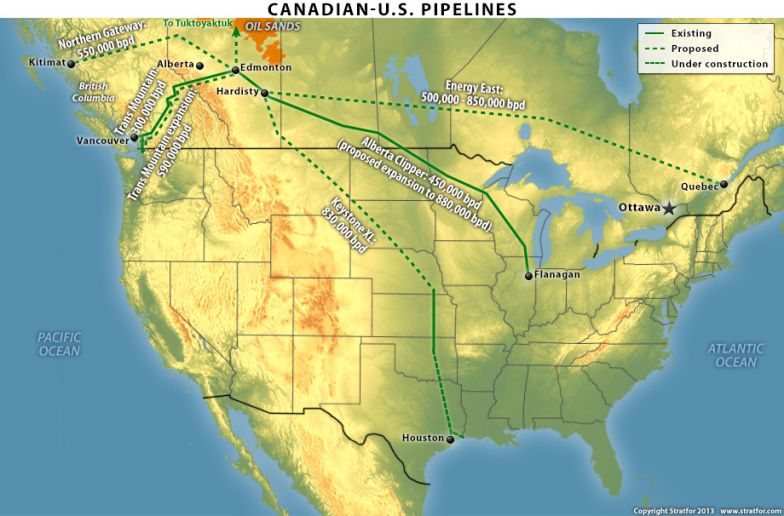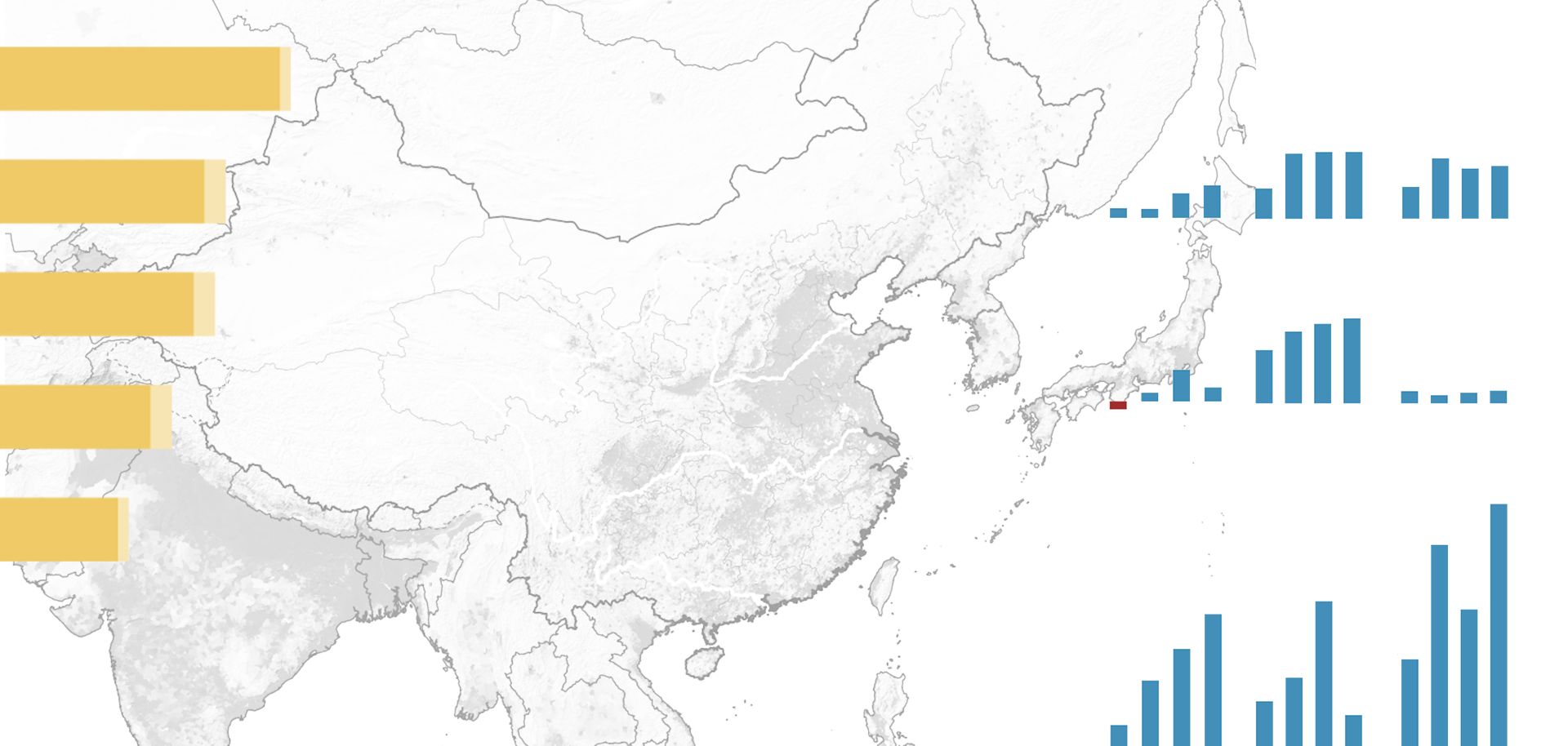
Energy accounts for 25 percent of Canada's overall exports, and energy exports are expected to grow over the next decade. Since 2000, the country's crude oil production has increased from about 2 million to roughly 3.5 million barrels per day, largely due to increased oil sands development in the province of Alberta. By the mid-2020s, Canada could produce 5.5 million barrels of oil per day — 3.5 million of which would come from oil sands. The Canadian oil industry's biggest problem is that it is completely tied to the United States. Inadequate pipeline infrastructure throughout North America has led to higher transportation costs and a supply surplus, causing Canada's benchmark crude, West Canada Select, to be sold at around $75 per barrel — about 25 percent below the going rate for international crude of similar quality.
This dynamic has led some companies to shelve certain projects or leave the Canadian oil industry altogether. Alberta's provincial government has increased diplomatic pressure on the United States and British Columbia to support the construction of pipelines. One such proposal is TransCanada Corp.'s Keystone XL project. The pipeline could transport 830,000 barrels of oil per day, but it has faced political obstacles in the United States. Another proposal is to double the capacity of the Enbridge's existing Alberta Clipper oil pipeline to 880,000 barrels per day, but this project could face similar political obstacles.
Meanwhile, there are several proposals pending for pipelines that would connect Albertan oil fields with ports in British Columbia. Kinder Morgan has proposed a $5.4 billion expansion to increase capacity on its 60-year-old Trans Mountain pipeline, which currently delivers 300,000 barrels per day of crude to the Pacific coast. Meanwhile, Enbridge has proposed building a 550,000-barrel-per-day Northern Gateway pipeline to the coastal city of Kitimat. Gaining access to alternative markets would help lessen the Canadian oil industry's dependence on the United States, while also alleviating the supply glut that has kept prices low.



